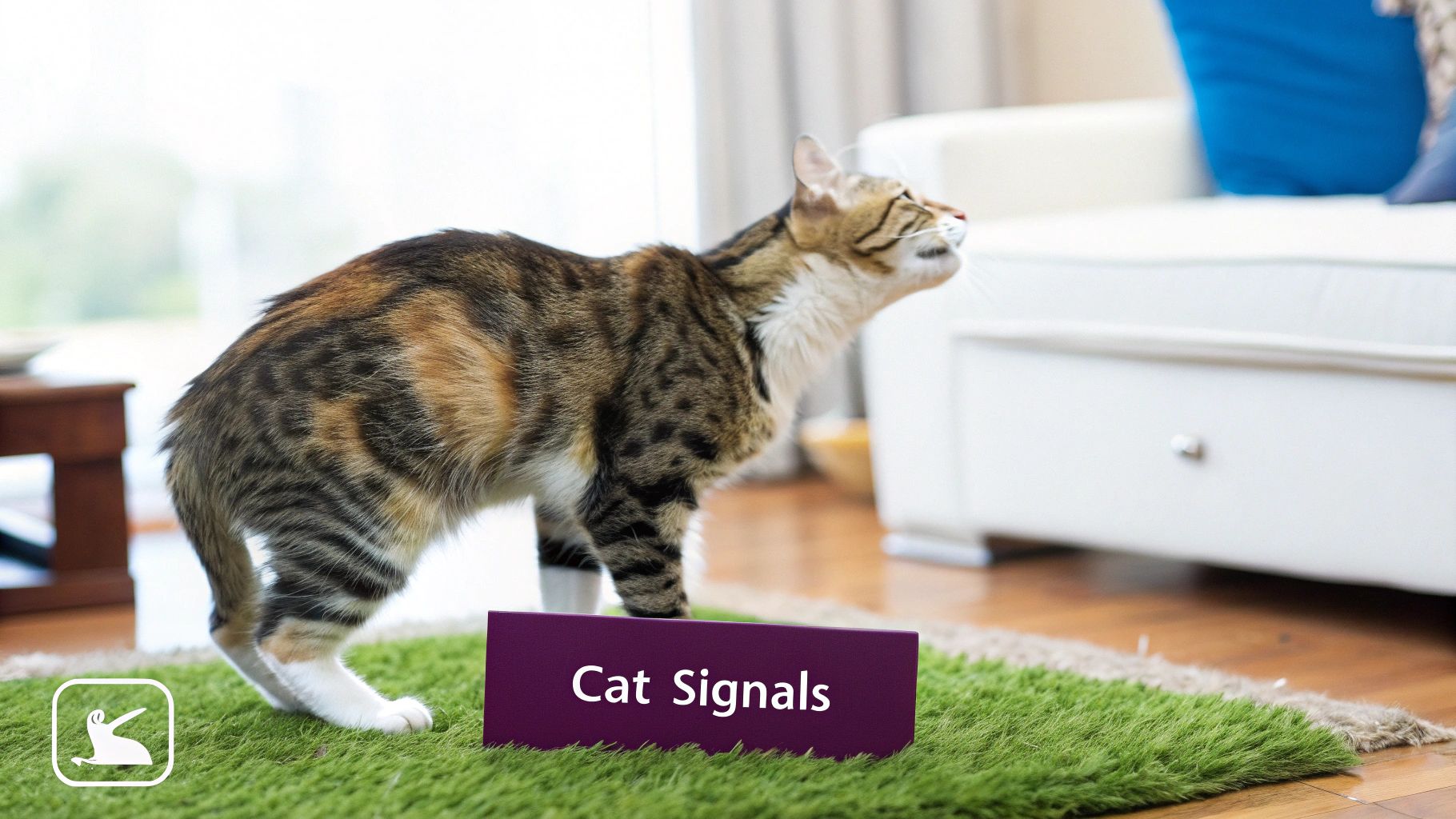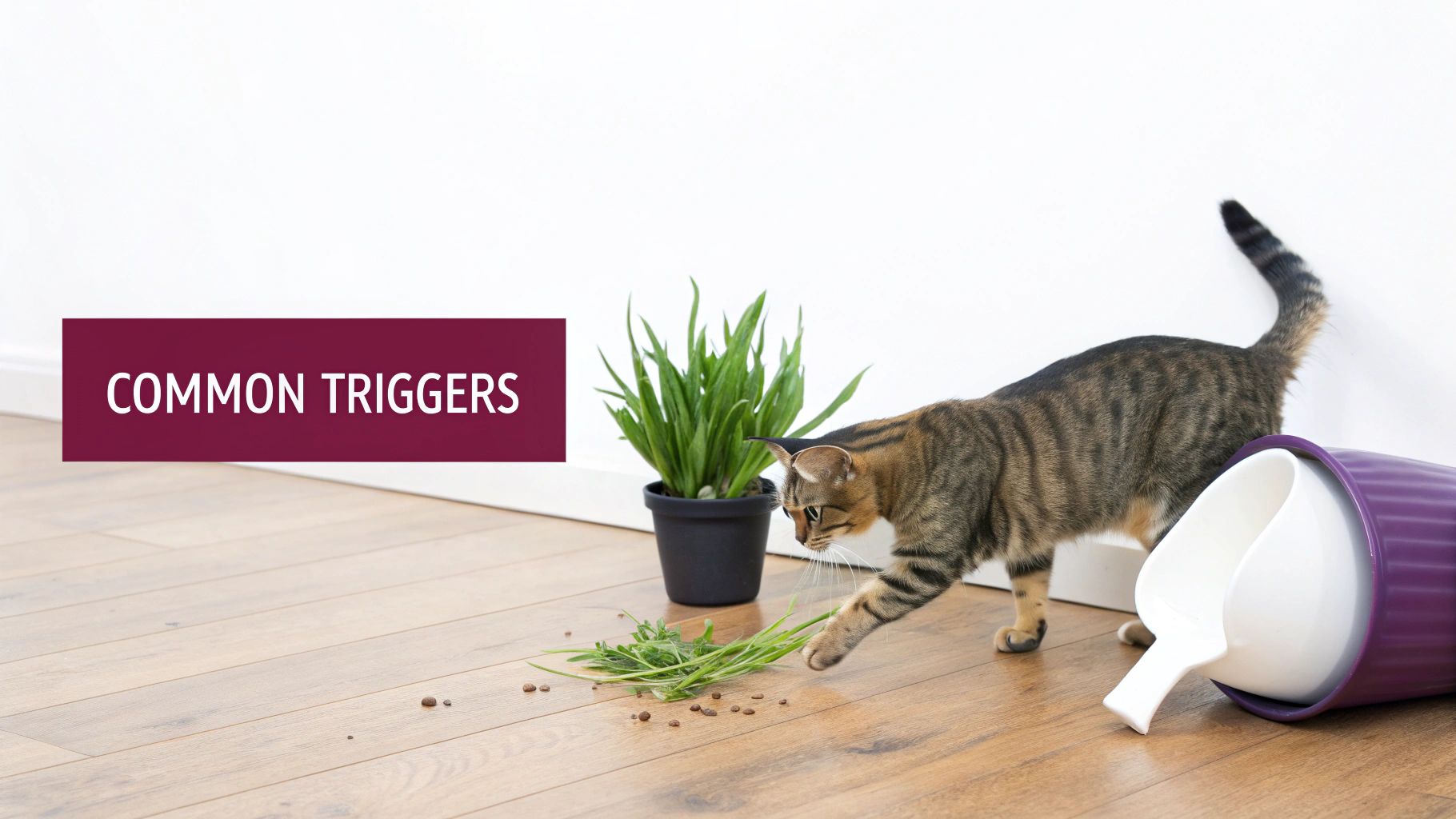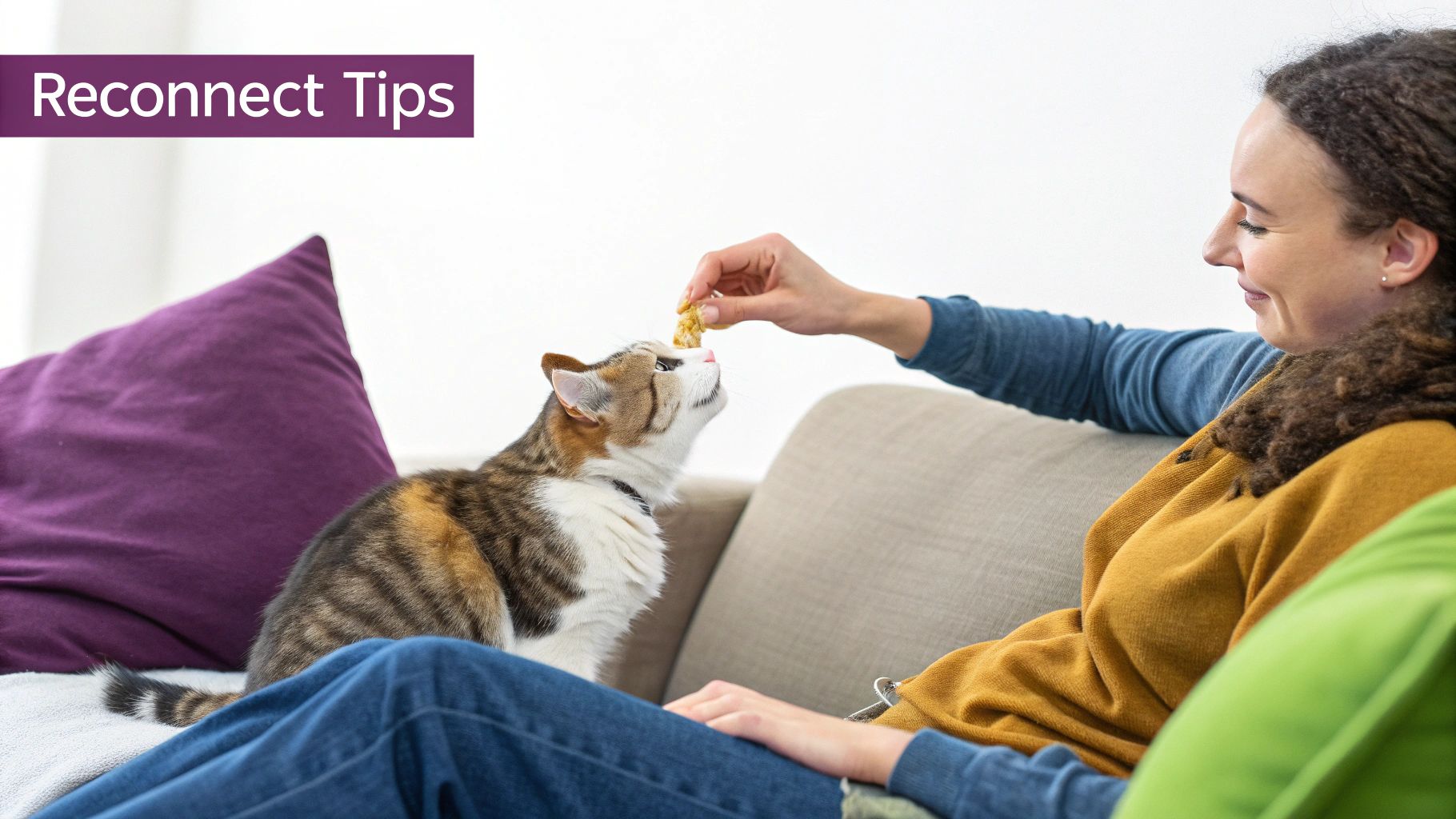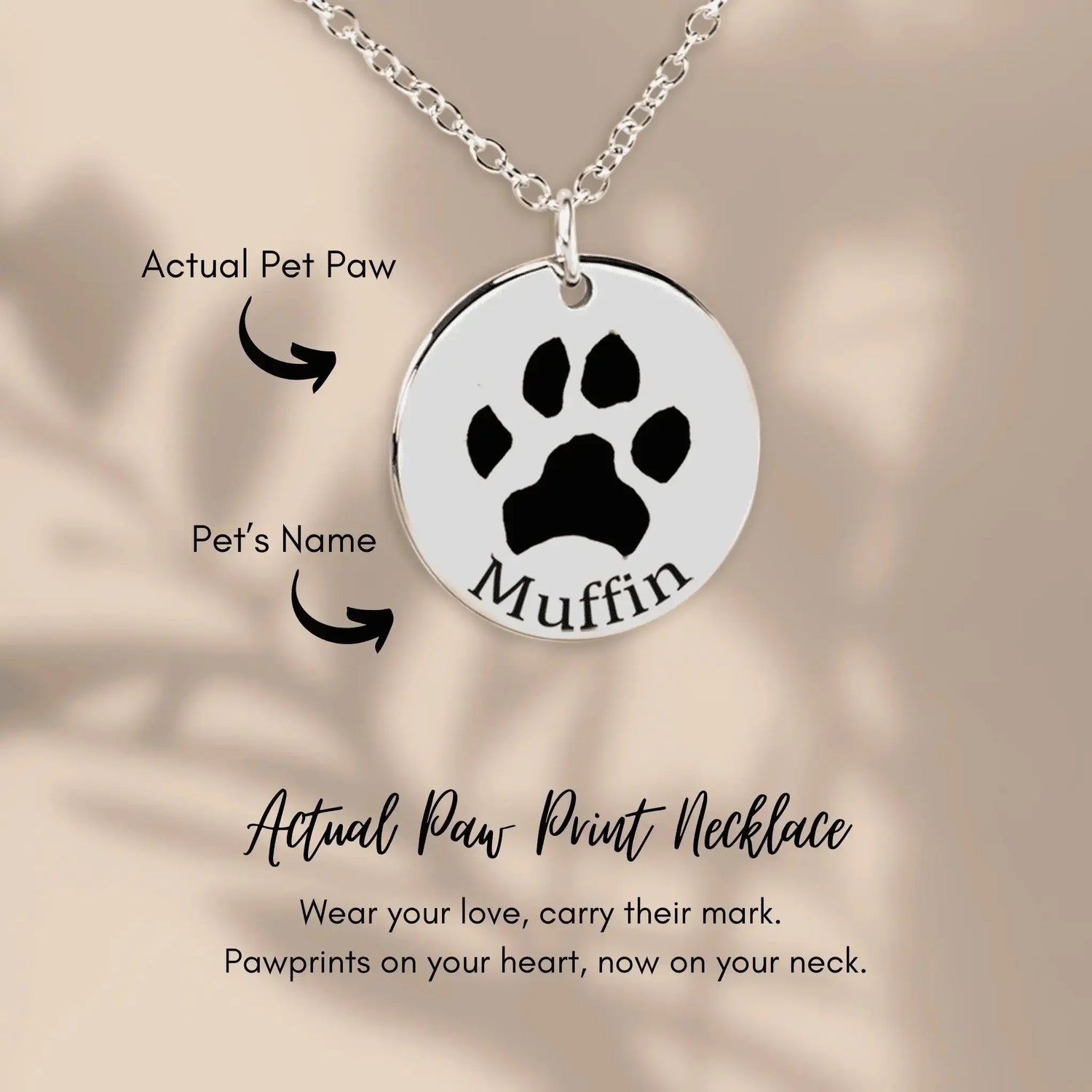Why Is My Cat Mad at Me? Tips to Get Back in Their Good Graces 😻

Ever get that distinct feeling you've been put on your cat's naughty list? When you're thinking, "my cat is mad at me," it’s easy to feel like you've committed a serious feline felony. But don't panic, hooman! Their behavior is usually a lot more nuanced than simple anger. Our head floof, Floofie, says it's just a communication breakdown!
The reality is, cats often show they're stressed, scared, or in pain in ways we humans immediately label as "upset." Learning to speak their unique language—a mix of meows, hisses, and epic side-eye—is the very first step to getting back in their good graces.
Is Your Cat Really Mad or Just Misunderstood?
Okay, so you're getting the cold shoulder. Maybe the tail is doing that angry-looking flick, or you've even been on the receiving end of a hiss. It feels personal, doesn't it? Before you start writing a heartfelt apology note (complete with a tuna-flavored ink 🐟), let's put on our detective hats and decode some feline body language.
What seems like pure rage could be your cat trying to tell you something completely different. As our own mascot Floofie will tell you, a genuinely angry cat looks worlds apart from one that's just a bit overstimulated or anxious.
Decoding Your Cat's Mood
Use this quick guide to determine if your cat is genuinely upset or just exhibiting other common feline behaviors.
| Behavior Sign | What an Upset Cat Looks Like 😠 | What a Happy Cat Looks Like 😊 |
|---|---|---|
| Ears | Flattened, turned back, or "airplane ears" | Forward, relaxed, maybe swiveling to listen |
| Eyes | Pupils are large and black, or constricted to slits; hard stare | Soft gaze, relaxed lids, may offer a slow blink |
| Tail | Lashing back and forth, puffed up, or held low and tense | Held high with a slight curve, maybe a gentle twitch at the tip |
| Body Posture | Crouched low, tense, back arched with fur on end (piloerection) | Relaxed, loose posture, maybe lying stretched out |
| Vocalizations | Growling, hissing, spitting, or a low-pitched yowl | Purring, soft meows, chirps, or trills |
Learning these signals is like getting a secret decoder ring for your cat's emotions. It's the key to understanding what they really need from you.
Why Your Cat's Mood Matters
Figuring out these subtle cues isn’t just about dodging a swipe from a claw. It's about being a pawsome pet parent. A cat that always seems grumpy could be dealing with boredom, stress from their environment, or even be in physical pain. If we ignore these signs, we miss a huge opportunity to make their lives better.
With the global pet cat population now soaring past 350 million, it's clear that countless owners are trying to decipher these exact behaviors. As more people, particularly younger generations, bring cats into their homes, understanding feline communication has never been more vital for building a strong, happy relationship.
The chart below breaks down the most common reasons why pet parents think their cat is mad at them.
As you can see, a simple change in routine is the single biggest stressor for cats, causing more issues than anything else on the list.
Vocal Clues and What They Mean
Sometimes, the message isn't just in the body language—it's loud and clear. A low growl is an obvious warning sign, but what about other sounds? An unhappy cat might yowl or meow way more than usual, which can be easily misinterpreted.
If your cat has suddenly decided to become the opera singer of the household, it's worth a closer look. For a deeper dive, check out our guide on why your cat might be yelling at you.
Floofie's Tip: "A sudden change in behavior, whether it's hiding more or becoming more aggressive, is almost always a sign that something is wrong in your cat's world. Don't dismiss it as just a bad mood!"
Common Reasons Your Cat Might Be Upset

So, you’ve done the detective work, you’ve read the body language, and the verdict is in: your furry overlord is definitely giving you the stink-eye. 😒 But why? Before you start spiraling, let's look at the most common "crimes" we humans commit that can turn our sweet kitties into grumpy little gremlins.
Cats are creatures of habit. Their entire world is built on predictable routines, and when we mess with that, their world suddenly feels chaotic and stressful. My own cat, Floofie, seems to think it’s like someone moving his favorite Cozy Snooze Cave without permission—a total catastrophe!
Disruptions to Their Royal Routine
Even tiny changes can feel like a major earthquake in your cat's kingdom. That terrifying roar of the vacuum cleaner? It's not just loud; it’s a full-blown invasion of their safe space. Did you dare to close the bedroom door when it's usually wide open? That’s high treason in the feline court! 🙀
Think about these common routine-busters from your cat's point of view:
- Rearranging Furniture: You see a fresh new living room layout; your cat sees a terrifying, unfamiliar landscape where all their precious scent markers have vanished into thin air.
- Changing Meal Times: Serving dinner 30 minutes late is a serious offense in the feline rulebook. Consistency is everything to a happy cat.
- A New Person or Pet: Bringing home a new roommate, partner, or another furry friend is a huge deal. Suddenly, they have to share territory, attention, and precious resources.
Floofie’s Pro Tip: "When big changes are happening, like a move, make sure my favorite comfy Cozy Snooze Cave and a few familiar toys are the very first things you unpack. It helps me feel at home right away!"
Scent-Related Offenses You Didn't Know You Committed
A cat’s sense of smell is basically their superpower. They use it to identify friends, foes, and territory with incredible accuracy. You might think your new perfume smells divine, but to your cat, you’ve just waltzed in smelling like a complete and utter stranger. This can be genuinely confusing and scary for them.
This powerful scent-based identification is also why a cat might pee on your shoes when they're upset. Your shoes carry your strongest, most concentrated scent. It's their desperate (and stinky) attempt to "reclaim" you by mixing their scent with yours, rebuilding a connection they feel is broken.
The Rise of the Modern Cat Parent
Interestingly, the way we interpret these behaviors is changing for the better. With a whopping 46.5 million households in the U.S. now owning a cat, our collective understanding of feline emotions is growing. Younger generations, in particular, seem more tuned in to their pets' emotional well-being, which is why we're seeing more people ask "is my cat mad at me?"
This cultural shift means we're finally looking beyond simple explanations and trying to understand our cats' complex feelings. You can dive deeper into the fascinating world of cat ownership trends on Catster.com.
Ultimately, when your cat seems upset, they are likely feeling insecure or stressed. They aren't plotting some elaborate revenge; they're sending out an S.O.S. signal in the only way they know how. Recognizing these triggers is the first big step toward making amends and restoring peace. To help them feel extra secure, try placing a cozy cat bed in their favorite quiet corner—it’s like giving them a permanent hug.
How to Make Amends with Your Annoyed Cat

So, you've somehow offended your feline overlord, and now you're getting the silent treatment and some serious side-eye. 🥶 When you're thinking, "my cat is mad at me," it's officially time for an apology tour. The good news? Getting back into their good graces is completely possible—you just have to learn to speak their language.
First thing's first: never force an interaction. Chasing your cat for a hug or scooping them up when they're hiding will only confirm their suspicion that you are, in fact, a giant, unpredictable menace. Give them space. Let them call the shots.
The Art of the Feline Apology
Your first move should be the classic slow blink. In the world of cats, direct eye contact is basically a challenge. But slowly closing and opening your eyes? That’s the equivalent of a warm, reassuring smile that says, "I see you, I respect you, and I mean no harm."
Try it from across the room. Find a quiet spot where your cat can see you, look gently in their direction without staring, and offer a few deliberate slow blinks. If you get a slow blink in return, you're on the right track! 😻 It’s the universal cat sign for “we’re cool.”
Next up is the peace offering. You know how you might apologize to a friend with a coffee? You can do the same for your cat, but with a super high-value treat. This isn't the time for their regular kibble. You need to bring out the good stuff.
- A tiny shred of plain, cooked chicken or tuna.
- A dollop of that lickable puree from a tube they love.
- Those fancy freeze-dried minnows that make Floofie go wild!
Place the treat near them without making a big deal out of it and simply walk away. This shows them that good things happen when you're around, which helps rebuild that positive connection without any pressure.
Rebuilding Trust Through Play
Once the icy tension has started to thaw, it's time to bring back the good vibes with some gentle play. Don't go straight for the belly rubs! Instead, ease into it with some parallel play, which just means you're both doing the same activity near each other without direct contact.
Grab a wand toy—one with feathers or a wriggly worm on the end is perfect. Sit on the floor a comfortable distance away and start flicking the toy around, making it look like prey. Skitter it across the floor and have it disappear behind furniture.
Floofie's Playbook: "Don't just dangle the toy in my face! Make it act like a real mouse or a bug. The thrill of the hunt is what makes it fun, and it helps me forget I was ever mad at you."
This kind of play allows your cat to tap into their natural hunting instincts and start associating you with fun and excitement again. They can join in at their own pace without feeling forced to cuddle or be touched. It’s an amazing way to create positive memories. If you need some inspiration, you can find a great list of the best interactive cat toys that are perfect for mending fences.
Remember, patience is everything. Your cat isn't holding a grudge; they're just feeling a little wary and need some time to feel secure again. By offering space, respect, tasty treats, and fun distractions, you’ll be back to headbutts and purrs before you know it. 💖
Creating a Stress-Free Home Environment

The best apology isn't just a peace offering of treats; it's showing your cat you've learned your lesson and are making real changes. If you're constantly asking yourself "why is my cat mad at me?" it might be time to look at your home through their eyes. A truly happy cat needs an environment that makes them feel secure, confident, and mentally sharp.
Let's turn your home into a feline paradise—a place so awesome, they’ll forget all about that time you accidentally startled them with the blender. Our mascot, Floofie, agrees that a little environmental enrichment goes a long way in preventing future feuds! 🐾
Give Them a Vertical World
Cats are natural-born climbers. In the wild, high perches offer safety from predators and a perfect vantage point for spotting prey. That instinct doesn't just vanish when they move indoors; providing vertical space is absolutely crucial for their confidence.
A sturdy cat tree like The Purrfect Vista Tower is so much more than furniture; it's a confidence booster. It gives your cat their own "safe zone" off the ground, where they can observe their kingdom without feeling threatened by household foot traffic. Pop it near a window, and you’ve just added bonus entertainment with "cat TV"—birds and squirrels are always a hit show.
Satisfy Their Natural Instincts
A bored cat is often a cranky cat. One of the most important instincts to satisfy is their deep-seated need to scratch. Scratching isn't bad behavior; it’s essential for stretching their muscles, marking territory with the scent glands in their paws, and keeping their claws in top shape.
Providing the right outlets for these natural behaviors can dramatically reduce their frustration and lead to a more peaceful home. A great option is a sturdy cat scratching ball that engages their playful side while fulfilling this primal need.
Floofie's Top Tip: "I need places to hide and feel safe! A cozy Cozy Snooze Cave or even a simple cardboard box left out just for me can be the perfect retreat when things get a little too noisy or overwhelming."
Banish Boredom with Brain Games
Physical exercise is important, but don't forget about mental stimulation! A cat's brain is wired for the hunt, which is all about problem-solving. Puzzle feeders like The BrainyCat Treat Ball are a fantastic way to engage their minds and make mealtime way more exciting.
Instead of just pouring kibble into a bowl, make them work for it. This mimics the challenge of a real hunt and prevents the kind of boredom that can lead to destructive behaviors or general grumpiness. It's a simple switch that can make a huge difference in their daily happiness.
Making these environmental changes is a proactive way to keep your cat content. For even more ways to create a safe haven, check out our guide on how to cat-proof your home, which covers safety from a cat's point of view.
Your Cat's Happiness Checklist
To make things even easier, we've put together a checklist of must-have items for creating a true feline sanctuary. Think of this as your roadmap to a happier, more harmonious home life with your best furry friend.
| Enrichment Item | Why It's Important for Your Cat | Floofie's Top Pick (Product Link) |
|---|---|---|
| Tall Cat Tree | Provides a safe, high vantage point to build confidence and survey territory. | The Purrfect Vista Tower |
| Puzzle Feeder | Engages their mind, prevents boredom, and satisfies hunting instincts. | The BrainyCat Treat Ball |
| Designated Safe Spot | A quiet, personal space (like a covered bed) to retreat to when stressed. | The Cozy Snooze Cave |
By thoughtfully setting up their space, you're not just preventing future conflicts—you're showing your cat, in a language they understand, that they are safe, loved, and at home.
When Anger Is a Sign of a Health Problem
Sometimes, that grumpy glare from across the room isn't about the vacuum cleaner incident from yesterday. When you're asking yourself, “is my cat mad at me,” it's incredibly important to consider if their moodiness is actually a cry for help. 😿
Cats are absolute masters at hiding pain. It's a survival instinct. So, a sudden shift to aggressive or withdrawn behavior is often the very first sign that something is physically wrong.
A cat in pain can't just tell you what hurts. Instead, they show you through their actions. That hiss when you try to pick them up might not be sass—it could be a sharp, shooting pain from an arthritic joint or a sore tooth they've been hiding.
Differentiating Grumpiness from Sickness
So how do you tell the difference? Look for sudden, unexplained changes in their daily habits. These are major red flags that should have you calling your veterinarian right away.
Key warning signs to watch for include:
- Litter Box Problems: A cat who suddenly starts avoiding their litter box isn't being spiteful. They might be experiencing the pain of a urinary tract infection, which makes them associate the box with discomfort.
- Changes in Appetite: Is your usually food-obsessed kitty suddenly turning their nose up at dinner? A loss of appetite is one of the most common and serious signs of illness.
- Poor Grooming: Cats are famously meticulous groomers. A sudden unkempt or matted coat can mean they just don't feel well enough to keep up with their normal routine.
- Hiding or Withdrawal: Is your normally social cat now camping out in their Cozy Snooze Cave? Hiding is a classic sign of a cat trying to cope with pain or illness in solitude.
A change in behavior is a change in health until proven otherwise. Your cat relies on you to be their advocate, so never dismiss sudden grumpiness as just a "mood."
Understanding these signals is crucial, especially since unexpected vet bills can be a significant financial challenge. The pet care market is growing fast, but economic shifts can make it tough for owners to afford care, which in turn can strain the human-animal bond. You can learn more about trends impacting pet care on petfoodindustry.com.
If you spot any of these signs, don't wait and see. A quick trip to the vet can rule out serious issues and get your friend back to feeling like their purr-fect self again. Floofie insists that a healthy cat is a happy cat! ❤️🩹
Got Questions About Your Cranky Cat?
Still wondering about your mysterious, moody feline? It's completely normal! When you're trying to figure out why your cat seems mad at you, a few specific scenarios tend to pop up again and again. Floofie and I have rounded up some of the most common questions to give you some quick, clear answers.
Think of this as your go-to guide for those confusing, "what did I do?!" moments. 😼
How Long Will My Cat Stay Mad at Me?
First, let's reframe this. A cat’s "grudge" isn't like a human's. It’s really a period of stress or wariness that can last anywhere from a few hours to a couple of days. How long it lasts really hinges on your cat's personality and just how big the "offense" was. An accidental loud noise? They'll probably get over it pretty quickly. Bringing a new puppy home? That's going to take a lot longer.
Patience is your best friend here. Give them their space, and slowly re-introduce positive things like their favorite treats or a gentle play session with an interactive toy like The BrainyCat Treat Ball. The most important thing is to never force affection. Let them come to you when they're ready—this is absolutely crucial for rebuilding their trust.
Can Changing My Cat's Food Make Them Mad?
Oh, absolutely! 🐾 A sudden switch in their diet can definitely lead to a food strike, which is easy to interpret as them being mad. More importantly, it can cause some serious digestive upset, and let's be honest, no one is in a good mood with a tummy ache!
The golden rule for switching foods is to take it slow. Do it gradually over 7-10 days. Start by mixing just a tiny bit of the new food into their old food, and slowly increase the amount each day. This gives their system (and their picky palate) time to get used to the change.
My Cat Started Hissing at Me After My Vacation. What Do I Do?
This is such a common one, and it can feel really personal and confusing! When you come back from a trip, you smell different. You smell like hotels, airplanes, rental cars, or maybe even other animals you encountered. Your cat, who relies heavily on scent to recognize family, might genuinely not know who this strange-smelling giant is in their territory.
Seriously, don't take it personally! Just give them plenty of space and speak to them in a calm, gentle voice. You can try offering a really high-value treat from a distance or leaving a t-shirt you've worn recently in their favorite sleeping spot, like their Cozy Snooze Cave. This helps them re-acclimate to your familiar scent. Before you know it, they’ll realize it's you and be ready for those welcome-home cuddles.
At FloofChonk, we know that a happy cat makes a happy home. From cozy beds like The Cozy Snooze Cave to engaging toys like The BrainyCat Treat Ball that mend relationships through play, we have everything you need to win back your furry friend's affection. Explore our collections and find the purrfect peace offering at https://www.floofchonk.com.

